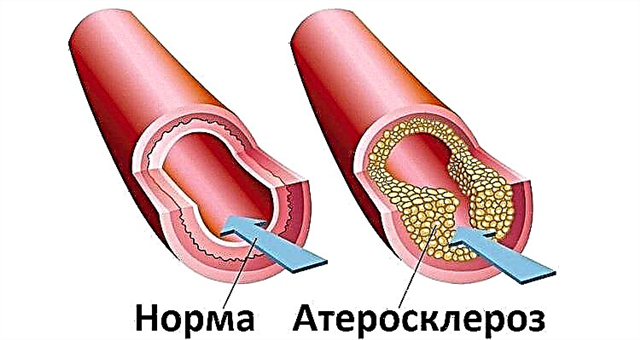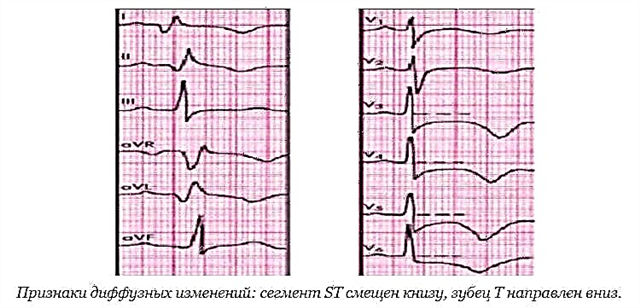Autumn, winter and spring are a special period when there is a lack of sunlight and heat, the body loses vitamins, and the defenses are significantly weakened. Under these conditions, it is very easy to catch an infection in damp cold weather. There are many pathogens that can cause disease. Sore throat and flu are common infectious pathologies that affect people with weakened immune systems. If a person has symptoms of a cold, then how to distinguish a sore throat from the flu?
General concepts
What is sore throat?
 Angina (acute tonsillitis) is an infectious-allergic disease characterized by inflammation of the palatine tonsils, mucous membranes of the palate and throat. The causative agents of the disease can be viruses, bacteria, bacilli, fungi, spirochete. The disease is very contagious. People with chronic processes and weak immunity, pregnant women and children under 5 years of age are at risk.
Angina (acute tonsillitis) is an infectious-allergic disease characterized by inflammation of the palatine tonsils, mucous membranes of the palate and throat. The causative agents of the disease can be viruses, bacteria, bacilli, fungi, spirochete. The disease is very contagious. People with chronic processes and weak immunity, pregnant women and children under 5 years of age are at risk.
What is flu?
Influenza is an infectious disease of viral etiology caused by viruses of type A, C, B, of which type A affects humans and animals, types C and B are dangerous only for humans. Epidemics and pandemics of viral infections occur regularly due to the variety of virus antigens. For the same reason, it is impossible to develop a single vaccine against this disease.
Influenza viruses are incredibly resilient and can withstand temperatures up to 60 degrees below zero. True, in direct sunlight, the microorganism dies almost instantly. This explains the fact that in the summer people practically do not become infected. Influenza C, B can be contracted from an infected person, influenza A - from both humans and animals (horses, pigs, poultry). Every year, 20% of the world's population becomes infected, and up to half a million people die. Most infected people die from complications. Influenza belongs to the group of acute viral respiratory infections.
Differences in symptoms
The clinical picture of acute tonsillitis and viral infection is very similar. Both diseases develop rapidly, the symptoms increase very quickly within a few hours after the end of the incubation period. Characterized by severe intoxication, temperature up to 40 degrees and above, severe weakness, chills, lack of appetite, nausea, vomiting, soreness in muscles, joints, headache, dizziness. But still, there is a significant difference between the two pathologies.
At this stage, it is very difficult for a person without medical education to distinguish tonsillitis from influenza.
The main differences between the two diseases are:
- Catarrhal phenomena. With a virus, catarrhal phenomena are pronounced, profuse nasal discharge is mucous in nature, rarely purulent, if a bacterial infection joins.
 Dry persistent cough, sore throat, hoarseness of the voice appears on the first day of illness. On the 3-4th day, the cough becomes wet. Photophobia and lacrimation are noted. These symptoms should subside after a maximum of three days. If this does not happen, then you can suspect the addition of a secondary infection.
Dry persistent cough, sore throat, hoarseness of the voice appears on the first day of illness. On the 3-4th day, the cough becomes wet. Photophobia and lacrimation are noted. These symptoms should subside after a maximum of three days. If this does not happen, then you can suspect the addition of a secondary infection.
With angina, catarrhal phenomena are represented mainly by redness of the mucous membrane of the throat and hoarseness of the voice. A runny nose and cough may be absent altogether, or may be mild.
If, in acute tonsillitis, there is abundant purulent discharge from the nose and a strong cough, then the addition of a secondary bacterial infection is implied.
- Sore throat. With viral infections, there is a sore throat when swallowing, but not as intense as with tonsillitis. In the latter case, there is a strong swelling of the mucous membrane of the throat and tonsils, which makes swallowing extremely painful, food intake becomes almost impossible.
- Plaque on the tonsils is always present with angina. The plaque is purulent, if the causative agent of the disease is a bacterium, serous - if the causative agent is a virus, curd - if the causative agent is a fungus. With flu, as with other viral infections, there is no plaque on the tonsils. This is the main difference between sore throat and flu.
- Lymph nodes in the neck are always inflamed with angina. They greatly increase in size, touching them is painful. The neck is visually swollen. With a viral infection, the lymph nodes may enlarge, but they are not as swollen and painful as with tonsillitis.
If with flu, nasal discharge is predominantly mucous, then with angina it is purulent
Differences in treatment
It is very important to consult a specialist at the very beginning of the disease. Since a viral infection begins and tonsillitis is almost the same, but the treatment measures are completely different. And the risk of complications depends on how competently the treatment will be selected.
With angina, the basis of treatment is antibiotic therapy. The causative agents of the disease can be different types of bacteria. To determine the type of pathogenic microorganism, a throat swab is taken, based on its results, one or another antibiotic is prescribed. An incorrectly selected drug will aggravate the course of the disease in the same way as the lack of therapy. That is why self-treatment of acute tonsillitis is categorically contraindicated.
A mandatory procedure in the treatment of angina is gargling with antiseptics and anti-inflammatory drugs.
It is necessary to regularly wash off plaque from the throat and tonsils, and with it - bacteria. Without rinsing the throat, recovery will be significantly delayed, and complications in the form of an abscess may develop. With the formation of an abscess, surgical intervention is no longer possible. Symptomatic therapy and drugs to strengthen the immune system are prescribed.
For the treatment of a viral infection in the absence of severe intoxication, bed rest, drinking regimen, proper nutrition, symptomatic therapy, vitamin therapy, and careful patient care are sufficient. Antiviral agents may be prescribed.
Differences in complications
 The outcome for both diseases is favorable, subject to timely treatment. In the absence of therapy, complications can develop, both distant and at the very beginning of the disease. At the very beginning, in both cases, a secondary infection can join, resulting in sinusitis, otitis media, sinusitis. Long-term consequences are much more severe, they require urgent medical attention and long-term treatment.
The outcome for both diseases is favorable, subject to timely treatment. In the absence of therapy, complications can develop, both distant and at the very beginning of the disease. At the very beginning, in both cases, a secondary infection can join, resulting in sinusitis, otitis media, sinusitis. Long-term consequences are much more severe, they require urgent medical attention and long-term treatment.
Consequences of sore throat:
- rheumatism;
- from the heart: myocarditis, pericarditis, endocarditis, heart defects, arrhythmia, heart failure;
- from the side of the kidneys: pyelonephritis, glomerulonephritis, renal failure;
- meningitis, encephalitis, brain abscess;
- phlegmon;
- blood poisoning;
- chronic tonsillitis.
Influenza consequences:
- pneumonia;
- hemorrhagic pulmonary edema;
- respiratory failure;
- cardiovascular insufficiency;
- nephritis, pyelonephritis;
- pericarditis, endocarditis;
- swelling of the brain.
Common between sore throat and flu:
- high index of contagiousness;
- the peak of diseases occurs in the autumn-winter period;
- alimentary transmission in most cases;
- severe intoxication;
- the need for symptomatic therapy;
- high risk of life-threatening complications in the absence of timely therapy.
Even if you thoroughly know in theory how angina differs from influenza, in practice it is not so easy to distinguish between these diseases on your own. Therefore, when the first symptoms appear, it is imperative to consult a specialist.

 Dry persistent cough, sore throat, hoarseness of the voice appears on the first day of illness. On the 3-4th day, the cough becomes wet. Photophobia and lacrimation are noted. These symptoms should subside after a maximum of three days. If this does not happen, then you can suspect the addition of a secondary infection.
Dry persistent cough, sore throat, hoarseness of the voice appears on the first day of illness. On the 3-4th day, the cough becomes wet. Photophobia and lacrimation are noted. These symptoms should subside after a maximum of three days. If this does not happen, then you can suspect the addition of a secondary infection.

